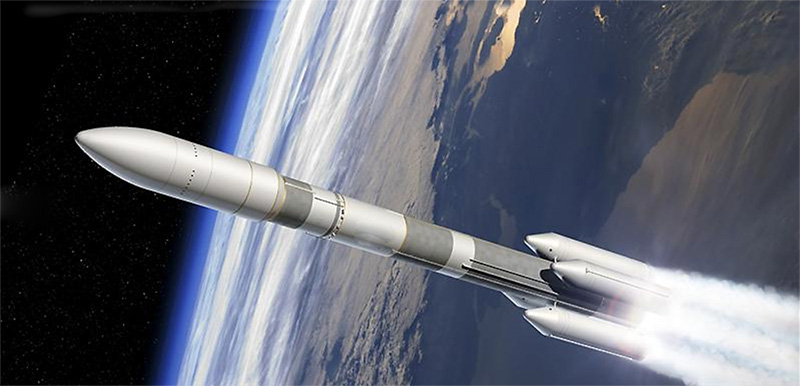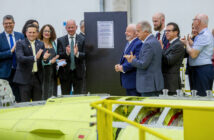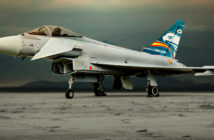By Leandro Maldonado

With a first test flight scheduled for 2020, the future Ariane 6 launcher will provide Europe with a more flexible launcher than the current heavy dual payload Ariane 5. ©Airbus DS
Toulouse, France, 12 August 2015 — The European Space Agency (ESA) and Airbus Safran Launchers today signed a €2.4 billion contract covering the development of the future Ariane 6 launcher in its two versions, Ariane 62 and 64. This contract includes, notably, a firm commitment of some €680 million for initial development activities (phases A & B) up to the Preliminary Design Review scheduled for mid-2016.
Beyond the contract signed today the total amount for the development of the launcher will be approximately €3 billion, including boosters to be shared by Ariane and Vega, as well as €400 million of industrial investment. “The contract – signed within a matter of months of the historic decision taken by representatives of the ESA member states during the Ministerial Conference on 2 December 2014 in Luxembourg to build a latest generation European launcher – will see industry taking on the leading role in its design and marketing,” said Alain Charmeau, CEO of Airbus Safran Launchers. “Both our and our European industrial partners’ commitment is a sign of our determination to provide our customers, whether they be institutional or commercial, with a launcher that is as reliable as ever while being increasingly competitive and adapted to the rapidly evolving space market. I would once again like to thank the European Space Agency and the national agencies, in particular the CNES, the DLR and ASI, for their support and trust.”
The Airbus Safran Launchers teams will now finalize the design of the two versions of the Ariane 6 launcher and the accompanying industrialization process as part of a new industrial structure established within Europe to improve efficiency.
Ariane 6 will come in two variants.
- Ariane 62, with two P120 solid boosters, will weigh around 500 tonnes (1,100,000 lb) at lift-off and is intended mainly for government and scientific missions. It will be capable of launching up to 5,000 kg (11,000 lb) into geostationary transfer orbit.
- Ariane 64, with four P120 boosters, will have a lift-off weight of around 800 tonnes (1,800,000 lb) and is intended for commercial dual-satellite launches of up to 10,500 kg (23,100 lb) to GTO.
Ariane 6 can be regarded as Europe’s response to a strong international competition in the launcher field. With an early-2014 price estimate of approximately US$95 million per launch it will be more expensive than the Falcon 9 launcher of the US company SpaceX or the Chinese Long March 3B. Both launchers place in orbit smaller payloads but at lower prices, approximately US$57 million and US$72 million respectively. The site of the launch pad for Ariane 6 at Europe’s Spaceport in Kourou, French Guiana has been chosen, and prime contractor CNES is already excavating the site. The new complex will also include facilities for preparing the launcher.



